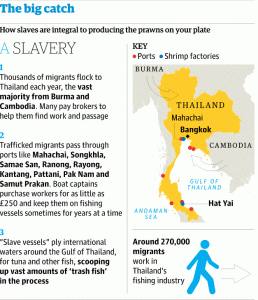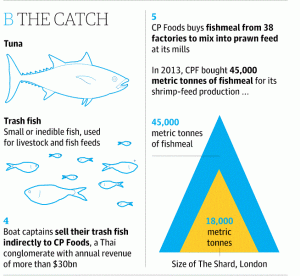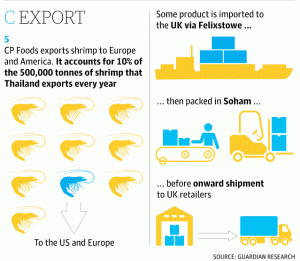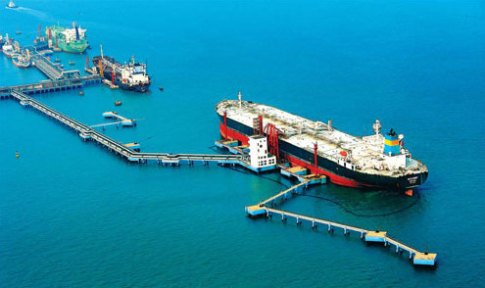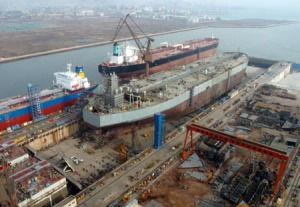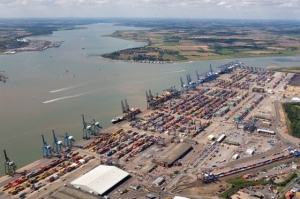It has become a more visible and fascinating part of maritime business. The seaborne liquefied natural gas trade, and the almost 400 highly specialised tankers which serve it, are now a larger part of global shipping activity. The substantial LNG carrier newbuilding order book at shipyards implies rapid fleet growth in the next couple of years, and probably for much longer.
How has this trade evolved, and what are its prospects in the period ahead? Increasing world movements, and expectations of a continued and accelerating upwards trend, have persuaded many shipping investors that there will be good returns. But the participation price is high, with the bigger gas carrier newbuildings costing multiples of VLCC (very large crude carrier) or capesize bulk carrier prices, for instance.

Another aspect, entering the maritime scene, is the associated development of floating liquefied natural gas (FLNG) installations. These are designed to provide an offshore alternative to land-based plants processing gas into liquid form for transportation. Adding to the sometimes confusing abbreviations, at the other end of the voyage a floating storage and regasification unit (FSRU) may be employed. As its name implies this unit, again an alternative to a plant situated on land, reconverts the liquid into the original form of gas for direct consumption. Capital investment involved in such floating appliances is vast.
Happy 50th anniversary, world fleet!
LNG seaborne trade began on a commercial scale exactly fifty years ago. Previously, some experiments had proved the technical feasibility, but not the economic viability. Several years later, in 1964, the first large-scale liquefaction plant was opened in Arzew, Algeria, and a regular service started from there to Canvey Island, UK. This service employed two 27,500 cubic metre capacity sisterships, Methane Princess and Methane Progress, the first two new ships constructed for LNG transportation. Together, these vessels were designed to perform about sixty round trips per year, bringing around 700,000 tonnes of liquid gas to the UK annually.
Rapid growth in the global LNG carrier fleet followed but, in the aftermath of two world energy crises in the 1970s, enlargement slowed and then partially reversed during the 1980s, before resuming over the next decade. Subsequently, strong expansion returned in the early 2000s.
Within the period of nine years from 2002 to 2010 mostly double-digit percentage fleet capacity increases were recorded, with growth averaging a remarkable 15.6 percent annually. Since then, in the past three years, increases tailed-off sharply. Nevertheless, over the entire period from the beginning of 2000 to the beginning of 2014, Clarksons Research figures show that the global LNG fleet’s capacity expanded more than four-fold, from 12.2 million cubic metres, to 55.3m cubic metres. And it is set to get much bigger.
During this year, the 386 ships in the world LNG carrier fleet at the beginning are due to be joined by many more. The result may be over 8 percent capacity growth in 2014, perhaps followed by over 7 percent in 2015. These estimates depend upon assumptions not only about newbuilding deliveries, but also about scrapping, although that influence seems likely to be fairly minor. The fleet is relatively young, mainly constructed within the past fifteen years, and most ships have long working lives, so demolition volumes probably will prove minimal. Higher newbuilding deliveries are implied by an extensive orderbook, resulting from a contacting surge in the past three years. At the beginning of this year orders at shipyards amounted to 17.4m cubic metres, approaching one-third of existing LNG fleet capacity.
LNG carriers are very costly to build, and have high operating costs, reflecting the sophisticated technology required. Natural gas, or methane, liquefies at an extremely low -161.5 degrees celsius temperature (reducing volume to 1/630th of the original), and therefore LNG must be kept below that figure. A tank system providing adequate insulation is expensive to install. Originally, the ships did not have refrigeration equipment: heavy insulation and a fast speed minimised boil-off, which was utilised for propulsion in steam turbine engines. In more recent years, ships with reliquefaction plant and diesel-electric or diesel engines appeared and have become standard, with most new vessels employing these power sources.
What explains the renewed popularity, for owners, of these expensive vessels? A standard large 160,000 cubic metre newbuilding LNG carrier currently costs $200 million, which is almost twice the $101 million price of a 320,000 deadweight tonnes VLCC. This magnitude of capital expenditure for one unit tends to limit investor participation. But recent signs have encouraged owners and operators. Slow fleet growth in the past three years, averaging just over 2 percent annually, is one influence. More importantly, there are distinct signs of accelerating LNG trade expansion over not only just a few years ahead, but probably many years ahead, as import demand around the world strengthens and new major export projects come on stream.
LNG trade set to race ahead
Over the past couple of years, global LNG trade has slackened. In 2011, after a strong upwards trend, it reached a record high, more than double the volume seen ten years earlier. The 2011 total was 240.8 million tonnes, according to figures compiled by the International Group of Liquefied Natural Gas Importers (IGLNGI). During the following twelve months a nearly 2 percent reduction was seen, followed by a minimal 0.3 percent increase to 236.9m tonnes in 2013. But resumed trade growth in the period ahead is widely expected, including an increase this year.
The attractions of natural gas are well known. Its environmental credentials as a clean energy source are especially prominent, in an era when reducing carbon emissions has become a policy priority for many countries. Compared with other hydrocarbons and alternatives – coal, oil, nuclear power, hydro-power and other renewables – gas is often seen as the most desirable and economically beneficial fuel. Global reserves are plentiful and expanding, more export sources are being developed, and relative pricing is often advantageous.
Natural gas is the fuel of choice for electricity generation in many countries, and for other industries. Its favourable technical characteristics, coupled with economic advantages, have resulted in its selection for new major power plants. Industrial processes elsewhere also consume gas, which can be used directly for commercial and household heating purposes.
These features seem set to ensure that future trade expansion is both vigorous and prolonged. Among optimistic views, a recent report published by the US Energy Information Administration suggested that another surge in global LNG trade may occur within the 2015 to 2025 period. Although natural gas trade is not entirely seaborne, as pipeline flows comprise a large part and these are set to increase, ship movements will greatly benefit from rising import demand around the world. Of particular significance for seaborne trade is that a major part of incremental volumes is likely to consist of output from several massive LNG export-oriented projects under development in Australia. The precise timing of additional export availability reflects the completion of liquefaction projects, while import capacity depends on regasification facilities.
Much attention is focused on the Asian region as the area where there is most potential for a strongly rising LNG import demand trend. In 2013 this region comprised 75 percent (178.0m tonnes) of world imports, with Europe (33.9m tonnes) comprising 14 percent and other importers together 11 percent, according to IGLNGI calculations. By far the largest individual importing country was Japan, with 88m tonnes, a massive 37 percent of the world total, followed by South Korea with 40m, a 17 percent share.
Japan’s current position, as dominant importer, has been enhanced by greater reliance on LNG in the aftermath of the earthquake and tsunami in spring 2011 and the associated Fukushima-Daiichi nuclear power station disaster. Consequent closure of all Japanese nuclear plants has boosted consumption of alternative fuels. LNG imports last year were 24 percent above the volume three years earlier. But potential for further expansion of LNG use is probably limited, especially if some nuclear plants are re-opened over the next few years.
Prospects for enlarged Asian imports are most evident in China and India. China’s LNG imports have almost doubled in the past three years, reaching 18.6m tonnes in 2013, while India’s rose by 45 percent to 13.1m during the same period. Further rapid growth in China seems assured amid strongly growing consumption and insufficient domestic gas resources, and despite additional pipeline capacity under development. One clear indication is several new LNG regasification terminals under construction in Chinese ports. Similar influences are visible in India.
The global exports scene currently features Qatar as the largest supplier, exporting 78m tonnes to world markets in 2013, a one-third share of the total. Other large exporters with 7-11 percent shares are Malaysia, Indonesia, Australia and Nigeria, accompanied by Algeria, Russia, Oman and Trinidad & Tobago with 4-6 percent shares. A dramatic upheaval is approaching, when seven projects in Australia could result in an estimated more than tripling of the country’s LNG exports by 2019. The biggest of these, the massive Gorgon project, is scheduled to start next year. These developments look set to propel Australia into the number one exporter position.
Shipments from the USA could also become a significant element, although export projections are surrounded by great uncertainty. Political decisions will be very influential. Until relatively recently, the USA’s main role in the LNG trades was that of an importer, with new LNG import facilities being opened in 2010 and 2011. But the ramping up of domestic shale gas production has been very rapid, Consequently, LNG imports have declined steeply from 8.2m tonnes in 2010, to under one-quarter of that total, 1.9m, in 2013.
Enhancing LNG’s maritime role
Enlarging LNG trade’s impact, within the maritime sphere, is the growing employment of, or intention to employ, a floating processing unit at one end or both ends of a voyage – the FLNG and FSRU mentioned earlier. In numerous importing countries, FSRUs have already started operating, providing economic advantages compared with alternative land-based regasification plants. Many more vessels of this type are on order.
The FLNG era is poised to begin soon, in spectacular fashion. Australia’s Browse project starting in 2017 will be one of the first entrants, deploying the Prelude, an FLNG vessel currently under construction in South Korea, which is estimated to cost $3 billion. This enormous unit, with a hull almost half a kilometre long, will have an LNG production capacity of 3.6m tonnes annually. Cargoes will be offloaded into conventional gas carriers for transportation to Asian export markets. The new FLNG is intended to remain in position off Australia’s north west coast for twenty five years.
Prominent characteristics of the global LNG shipping industry have been modified by several changes over the past decade, especially in the past few years. Perhaps most visibly, vessel employment arrangements altered. Employment was typically arranged on a long-term contract basis, for periods of twenty years or more, associated with specific gas production projects. In recent years a growing LNG volume has been available on the short-term market, amid rising trade and increasing diversity of trading patterns, with more exporters and importers participating.
This shift in emphasis has enabled a ‘spot’ and short-term freight market to develop and become established, attracting more attention from independent shipowners. Demand for transport capacity has been enhanced by a persisting LNG price differential between high-priced Asian markets, and other parts of the world where lower prices prevailed. With more cargoes being shipped from the Atlantic basin to Pacific destinations, voyage distances lengthened, adding to vessel demand.
Are there any clouds on the horizon for this promising shipping activity? One obvious possibility is that, with more cargo shipments not tied to long-term transportation contracts guaranteeing vessel employment, there is greater potential for over-capacity in the LNG carrier fleet to evolve. Another overshadowing factor is shale gas. If gas importing countries such as China are able to develop their domestic shale gas deposits quickly, on a large enough scale, import demand for LNG could be hit severely. Although such an outcome is certainly possible, signs currently suggest that in many countries shale gas is unlikely to be developed as quickly as it has been in the USA, for a variety of reasons: the huge challenges faced may result in slow, or very slow progress. LNG shipping market prosperity will benefit if this perception proves realistic,
Richard Scott
Visiting Lecturer, Greenwich Maritime Institute and MD, Bulk Shipping Analysis

